Consider your property type as well as your pet's needs when choosing the right invisible fence. Here are your options.
Our editors and experts handpick every product we feature. We may earn a commission from your purchases.Learn more.


Consider your property type as well as your pet's needs when choosing the right invisible fence. Here are your options.
Our editors and experts handpick every product we feature. We may earn a commission from your purchases.Learn more.

For large yards, GPS dog fences win hands down. While it’s possible to bury a wire around the boundary of a multi-acre property, it’s a lot of work and you need a lot of wire. The more wire you bury, the better the chances of an accidental break. Wireless transmitters don’t have the range to cover a lot of ground.
Sung Vivathana, co-founder and vice president of SpotOn Fence, says his product allows you to “create and save up to 20 fences of any shape and size nearly anywhere in the world using just your smartphone and the SpotOn collar.” Case closed.
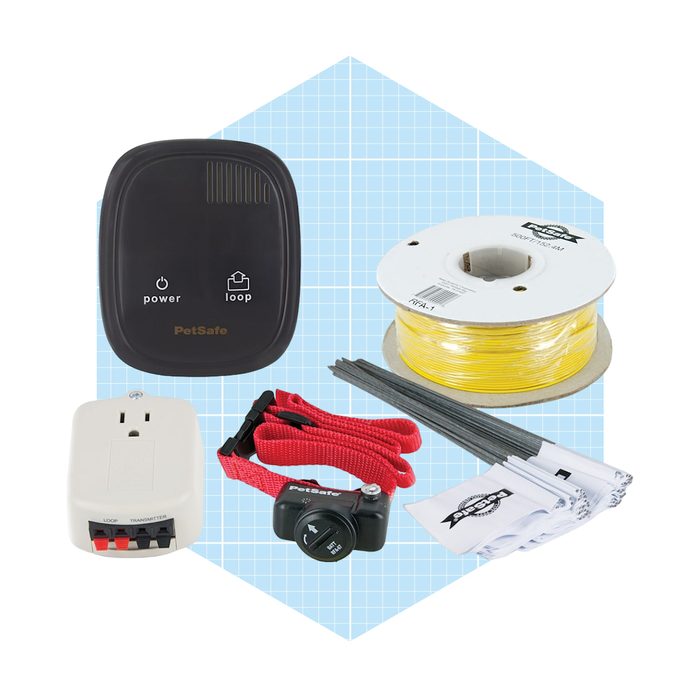
GPS dog fences work well in small yards, but they’re often unnecessary. The signal from a wireless transmitter tends to be picked up by other devices, so it isn’t ideal in a crowded neighborhood.
A buried wire invisible fence, like the PetSafe In-Ground Dog Fence Kit, is best for a small property. It’s also the least expensive option. Digging is minimal on a small property, and the transmitter can easily be placed in the basement or garage.
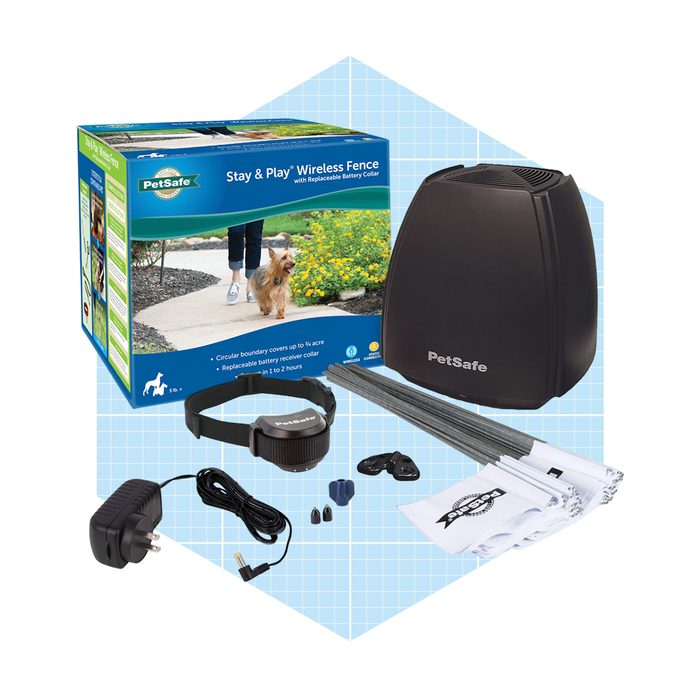
Renters want a fence they can take with them. That narrows their options to either a GPS fence or a wireless transmitter.
Because it can be used anywhere, a GPS fence is great for someone renting a sizable property. But compared to a wireless transmitter, it’s a big investment. If you’re on a budget and don’t live in a crowded neighborhood, go for the wireless transmitter.
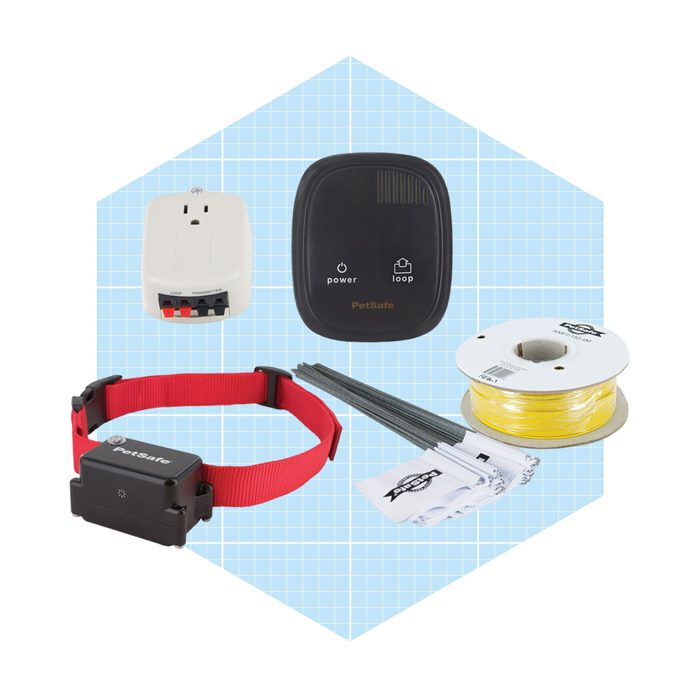
Small dogs tend to be sensitive, and a harsh vibration or shock can cause considerable distress. The PetSafe Stubborn In-Ground Fence is made for dogs that weigh eight pounds or more. It comes with a tone plus vibration mode as well as four customizable static levels.
This fence system ships with enough wire to enclose one-third of an acre. With extra wire (sold separately), it can handle up to 25 acres. Learn how to build a dog fence window.
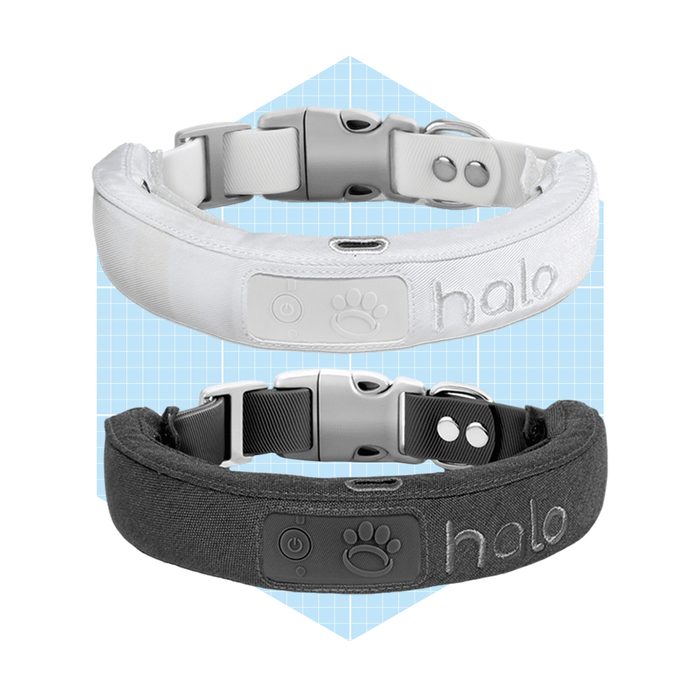
Large dogs need a lot of space to roam. The best way to give it to them is with a GPS fence like Halo. It’s for dogs weighing 20 pounds or more. Like all GPS fences, it’s controlled by an app on your smartphone.
The app tracks your dog’s activity, so it can customize the boundary to keep it out of hazardous areas. The app works with multiple collars. If you own more than one dog, this system is for you.

We know … training a cat to stay within a boundary is a tall order. But the makers of Invisible Fence Brand claim it can be done. If true, its collar is one of the few that can do it. It weighs only one ounce, so it’s perfect for cats as well as small dogs.
The Invisible Fence comes as a wired system or GPS collar. If you have a dog and a cat, give each a collar and control both with a single system.
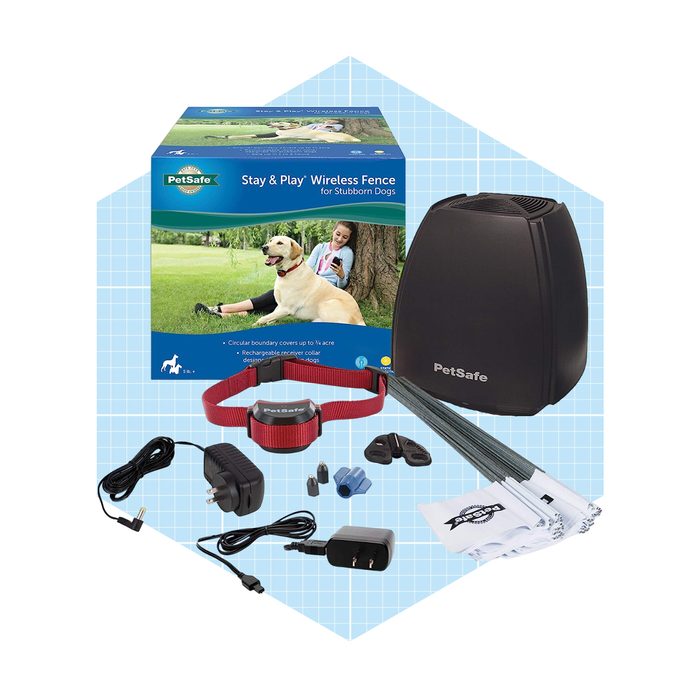
The choice here is easy. If you take your dog on camping trips and you don’t want it running off into the forest, you need a GPS fence. Use the app to establish the boundary around your campsite, then enjoy the scenery without checking on your dog every five minutes.
There’s one caveat: You need a cell signal for GPS devices to work. So if you’re planning a trip to remote locations where your phone doesn’t work, don’t forget to pack a leash.
The main reason you’re considering an invisible fence for your dog is to keep them safe and within sight. Here are some important factors to consider while shopping:
Choose a setup with enough coverage and range to fit your space. Most invisible fence brands specify the range of their devices and whether you’ll need extenders, depending on the size of your yard in square feet or acres.
Some invisible fences offer customization options that can be controlled through a phone app. These features allow you to adjust the correctional settings, providing more or less guidance depending on your dog’s needs.
Ensure your invisible fence fits comfortably within your budget. A good system can cost up to $1,000, though high-end models may go up to $1,500. Some options, especially those with in-ground wires, can be as low as $200. The cost varies based on yard size, installation needs and the quality of the fence you select.
An invisible fence won’t do all the work for you. You need to actively train your dog to understand the fence, how it works and where the boundaries are. Positive reinforcement is key to ensuring the system works effectively. If you’re not prepared to invest that time, an invisible fence may not be the right choice.
Additionally, not all dogs are suited for invisible fences. Puppies, for example, may not grasp the concept, and dogs with certain medical conditions could be negatively affected. Consult your vet before making a decision.
Chris Deziel, a Family Handyman contributor, curated this list and has over four decades of experience in home improvement. His extensive expertise covers all things home-related, including pet care, making him the perfect expert on invisible fences.
We also consulted Dr. Joanna Woodnutt, MRCVS, from Petlearnia. After graduating from the University of Nottingham, Dr. Woodnutt practiced in several companion animal clinics in the UK and now writes and works as a locum vet from the Channel Islands.
Versatility was a priority when assembling this list of the best invisible fences for dogs. While we focused on GPS fences with wireless transmitters, we included a range of price points and coverage options to fit different budgets, yard sizes and dog breeds. We also factored in professional and customer reviews to ensure the fences are effective and safe for dogs. As we frequently update this list with the latest products and prices, you can trust you’re getting the most current recommendations for invisible fences.
On average, it takes about three weeks for a dog to learn and understand an invisible fence’s boundaries. However, they require consistent training and guidance from their owner to grasp how the fence works.
No, dogs cannot technically jump over an invisible fence, as it relies on a frequency range rather than a physical barrier. However, dogs that aren’t properly trained may ignore the boundaries and run past the fence.
Ensure there is a clear visual boundary. This helps your dog understand where the limits are, especially during the initial training phase. “Without a visible boundary, it becomes very difficult for your dog to understand what’s happening and why,” says Woodnutt.
Use spray paint or masking tape to create a visible boundary that your dog can see until they are accustomed to the invisible fence. “Train your dog to come back to you when they see and approach the boundary, rather than wait for the collar to go off,” recommends Woodnutt. “By recalling them when they get close, they’ll soon learn in a positive way that they get treats when they don’t go further.”